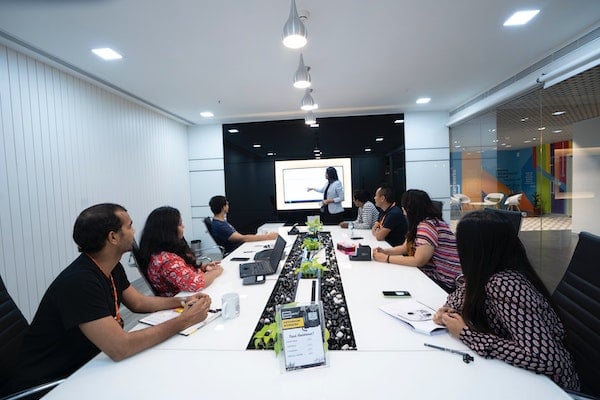Published on
Institutional Innovation: Keeping Faculty Involved

Institutions are known for being traditional and staying inside the box when it comes to innovation. But that model is beginning to change as higher education heads into a new normal. Innovation needs to happen, but it’s critical that everyone involved is on the same page. In this interview, Edward Leach discusses common obstacles an institution faces when making key strategy decisions, how to bridge the gap between leadership and faculty and how to create a smoother process when implementing new and innovative tactics.
The EvoLLLution (Evo): What are some of the most common faculty objections to institutional innovation, especially when it comes to scaling access to and development on a non-credit program?
Edward Leach (EL): Anytime you ask faculty to do something new and you do not provide them with the necessary support, it can lead to problems. Much like anything that you and I might be asked do that we’re not familiar with, we might need some type of training in order to be successful at it. It’s no different with faculty.
Another objection is that oftentimes we ask faculty to do things without making it clear why we’re asking them to do it. All of a sudden, a request just comes down like some type of edict. We don’t provide enough information or context about the reasons behind the change, and that too can cause problems.
As far as the non-credit side of the house goes, those same rules might not necessarily apply. My experience has been that most non-credit courses are not taught by full-time faculty or even adjuncts from the academic side. They’re taught by people who are actually working professionals in the field. If there’s a new course that the non-credit side wants to offer, it is usually able to go out and find someone who has current working expertise in that subject matter.
For the longest time, and maybe it’s still the case in a lot of places, the non-credit and credit sides were really separate entities; there wasn’t a lot of collaboration between the two sides, which can be problematic when trying to scale access to and develop a non-credit program. But there are some institutions that have gotten better at bridging the academic and non-academic sides of the house. And obviously a lot of problems can be eliminated when that happens.
Evo: Why is it important for administrators and institutional leadership to take faculty concerns—to bridge the gap between the two?
EL: If you want to get something done with your faculty, but you do not include them in the discussion, it’s likely going to result in a difference between what the faculty are willing to do and what the administration wants to do. If you’re an administrator and you’ve got an initiative that you’re expecting your faculty to take on, then you want to include them as much as possible in the process.
Of course, you want the initiative to be a success. And certainly, you want the process to be as smooth and effective as possible. But if there is much disagreement and confusion along the way, that’s going to unnecessarily waste everyone’s time and efforts. Faculty have a great deal of expertise, and if you want them to be a part of the solution, then getting their input from the very beginning would be a really smart move. They’ll likely have plenty of good information to add about how things should move forward and what the end product should look like.
Evo: Do you have any suggestions, advice or best practices that leaders can onboard to increase buy-in for innovation from their colleagues on the faculty side?
EL: Again, get faculty involved right from the very beginning. It’s probably not the best approach to bring them onboard late in the process, drop something into their lap, and say that this is what we’re going to do. By involving faculty from the very beginning, taking their input and ensuring that there’s space for adequate back and forth is probably the number one way get their buy-in. That said, you’re not going to get everybody’s buy-in. But hopefully you can get a critical mass of faculty onboard. Everybody on campus knows which faculty members tend to be willing to take part of new initiatives. Find these faculty members who tend to jump at these opportunities and who enjoy being part of the process, and get them onboard right from the beginning. They can help bring along some of their fellow faculty members who might need a little more encouragement to get onboard.
Evo: Is there anything you’d like to add about what it takes to make sure that faculty are actively involved in strategic decision making and direction setting for a college?
EL: When I was at St. Petersburg College in St. Petersburg, Florida–and I don’t know if this is the case at all institutions–the president’s cabinet had a faculty representative on it. During cabinet meetings, the faculty representative was there to provide faculty input, as well as take information from those meetings back to the faculty and share information with that group. She would also ensure that the faculty voice was heard in those discussions. Having a faculty representative on the president’s cabinet goes back to what I said earlier about keeping faculty informed. Faculty had a seat at the table, and not only did that make sure faculty were actively involved in strategic decision-making and direction-setting for the college, it also went a long way towards getting their buy-in on significant decisions.
This interview was edited for length and clarity.
Disclaimer: Embedded links in articles don’t represent author endorsement, but aim to provide readers with additional context and service.
Author Perspective: Administrator



